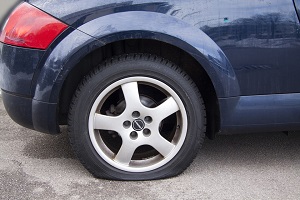Deciding Whether to Fix or Replace Your Tire

It’s a typical Monday morning, and you’re about to leave for work. As you approach your car, you notice your tire is flat. “I just had these tires installed last month,†you think. No matter how recently you purchased your tires, they remain vulnerable to damage from sharp objects like nails or debris scattered across the road. So, should you attempt a repair or invest in a brand-new tire?
Â
Your ability to fix the damaged tire rather than replacing it hinges largely on the size, location, and timing of the puncture. While repairing your tire may seem more budget-friendly, your safety—and the safety of your passengers—should always take precedence. Before deciding between a repair and replacement, make sure your tire meets the criteria for a viable repair.
Â
The first consideration is how long you drove on the tire after noticing the puncture. Continuing to drive on a flat or low-pressure tire can cause significant internal damage to the sidewalls, even if the puncture seems minor. To assess the full extent of the damage, the tire must be carefully inspected by professionals who can remove it from the wheel entirely.
Â
Next, evaluate the specifics of the puncture itself. Industry standards generally permit repairs for holes up to ¼ inch in diameter, provided the damage is located on the tread area of the tire. Punctures on the sidewall or shoulder are never candidates for repair, regardless of their size. Additionally, if the puncture is jagged, excessively long, or larger than ¼ inch, the tire is not suitable for repair. Deep cuts often indicate structural damage to the tire's internal belts, which could compromise its integrity over time.
Â
We strongly advise leaving tire repairs to certified professionals rather than attempting DIY fixes. A trained technician can conduct a thorough inspection and ensure the tire is restored to its original condition. While it might be tempting to save money by fixing a flat tire yourself, remember that your safety is paramount. After all, your tires are the sole connection between your vehicle and the road, making regular maintenance crucial for safe driving.
Â
Book your tire repair appointment online now
Stainless Steel Sheet Metal,Metal Sheet Bending Parts metal fabrication,Customized metal stamping and bending parts
Dongguan Shangen Precision Metal Plate Co., Ltd. , https://www.shangenmetal.com
